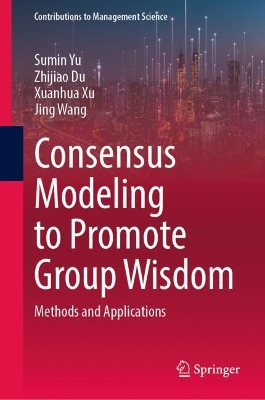Contributions to Management Science
1 total work
Consensus Modeling to Promote Group Wisdom
by Sumin Yu, Zhijiao Du, Xuanhua Xu, and Jing Wang
This book explores the latest theories, methods, and applications of consensus modeling. It proposes a variety of consensus modeling methods for different decision-making contexts, including conflict risk mitigation in group decision-making, integration with the failure mode and effects analysis technique, consideration of over-adjustment and flexible consensus, social network large-group decision-making environments involving multiple consensus costs, and multi-agent collaborative decision-making with consideration of trade-offs between revenue and reputation. In addition, this book discusses the application and implementation process of the proposed consensus modeling techniques in real-world decision-making, including collecting decision data, organizing decision-making groups, controlling the decision-making process, and evaluating the results.
We encourage researchers, academics, students, business managers, and policy makers engaged in a variety of real-world decisions characterized by group decision-making (e.g., emergency decisions, public affairs decisions, and major corporate decisions) to pay attention to the proposals presented in the book. This book systematically describes the latest theories, methods, and applications of consensus modeling with a view to providing practical methodological support for corporate decision-making, governmental decision-making, and so on. Special emphasis is placed on the fact that this book can provide students, especially graduate students, with a comprehensive perspective on the study of consensus modeling. For businesses and governments, this book provides methodological support for how to merge inputs from multiple parties to obtain a majority-approved consensus solution (at minimal group cost) and ultimately develop group wisdom.
